The future of robotics
Check out the latest innovations when it comes to robotics
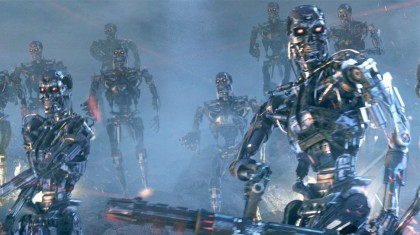
The future of robotics
There's an old Walt Disney cartoon on YouTube called 'Modern Inventions', a tongue-in-cheek snapshot of how the world considered robots and what we as a society might end up doing with them, poking a little fun along the way.
When you consider it was made way back in 1937, it shows just how much – and for how long – we've been fascinated by robotics. What's even more intriguing is how its appearance in popular culture has changed very little since.
Robotics has obviously come a long way from those comical beginnings, but more often than not, it's hidden away behind factory doors, doing everything from building cars to filling your orders on websites. But that's all set to change.

225km/h with no driver
While Google has captured most of the attention with its driverless car efforts over the last few years, many traditional car makers are quickly catching up and actively researching various aspects of driverless vehicles.
German carmaker Volkswagen is leading Europe's AdaptIVe (Automated Driving Applications and Technologies for Intelligent Vehicles) program, which includes a 'who's who' of engineering giants including BMW, Mercedes-Benz, Volvo and Bosch as well as universities from most of the major European motoring economies. The research project began in January 2014 and is expected to run over the next three-and-a-half years.
It looks like good progress is being made as well – in October 2014, Volkswagen subsidiary Audi and Stanford University teamed up to push an Audi RS 7 sports car around the famed Hockenheim track in Germany at race speeds of up to 225km/h, all with no driver, no human intervention – and no accidents.
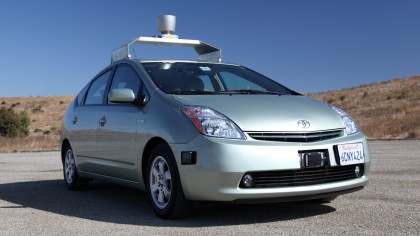
Tech companies line up
The Institute of Electrical and Electronics Engineers (IEEE) has predicted that up to 75% of all vehicles will be autonomous by 2040, making it a growth market all major tech companies are eyeing off – and sooner rather than later.
Google's Nexus 9 Android tablet is powered by Nvidia's equally-new Tegra K1 processor, but Nvidia has its eye on a much greater prize for the Tegra K1 than just phones and tablets. The new CPU is being touted as a solution for self-driving cars, with reports it has already been mated to a LiDAR (light radar) sensor used in many driverless vehicles to map terrain and obstacles in front of the vehicle.
Also interesting is the growing affordability of the technology involved – with much of it built on the rise and rise of low-cost computer processors. Here, it's enabling faster, smarter, more capable robotic systems to be built.
There is much more CPU horsepower inside the fitness band on your wrist than what guided man to the moon in 1969 and now, companies such as Renesas Electronics, ST Microelectronics and Freescale Semiconductor (all licensees of smartphone/tablet chip designer ARM) are major players in the automotive market.
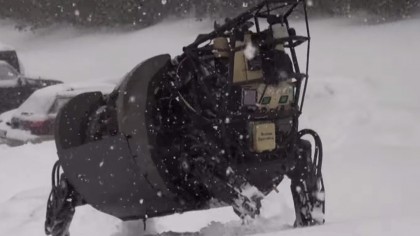
Military robots
Star Wars may have brought robots to the battlefield on the big screen, but the US Defense Advanced Research Projects Agency (DARPA) is making it happen in real-life. We might not quite be at 'Attack of the Clones' stage just yet, but like most things, developments in technology often have military beginnings.
Engineering firm Boston Dynamics has been spending DARPA's money developing a range of walking/running bots or 'quadrupeds' with impressive results, including the Legged Squad Support System (LS3) pack-mule now being trialed for the US military, the impressive Cheetah in 2011-12, reaching just short of 50km/h, and the most-recent untethered version called WildCat, combining the freedom of the LS3 with some of the speed of Cheetah. It's not surprising then that Boston Dynamics was purchased by Google in December 2013.
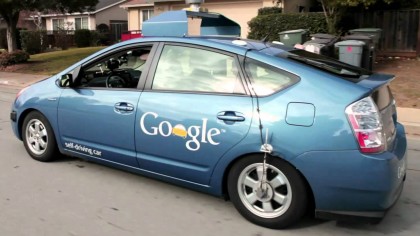
From engineering to ethics
At its basic level, the science of robotics is a marriage between mechanical and electrical engineering, but it also has many relatives coming along for the ride. As the technology becomes ever more sophisticated, software development increasingly plays a dominant role, which calls on other disciplines such as artificial intelligence and machine learning.
That also pushes into the realm of 'machine psychology', the idea of machines thinking and morally reasoning like humans. Further and you reach into the theoretical area of 'cyberethics', looking at the issues of technology from a legal, moral and social perspective.
While the engineering involved in getting a car to drive itself has progressed incredibly over the last ten years, that still may be an easier feat than working out some of the ethical ramifications of the technology.
For example, you're in a driverless car travelling along a narrow road and just about to enter a single-lane tunnel when a child suddenly runs in front of you and trips over. Does the car swerve, injuring you, or remain on its straight course and injure the child? This 'tunnel problem', prompted by Ph.D. student Jason Millar from Canada's Queens University, is a modified version of the classic 'trolley problem' often used to discuss consequentialism, the ethical theory described as choosing a moral option that results in the 'the greatest good for the greatest number'.
Solving this dilemma from a human perspective is hard enough – but how would programmers code a driverless car to solve this problem? And who gets to make that decision?
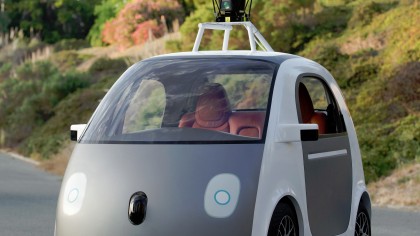
Who to save?
Roboticists from the Bristol Robotics Laboratory, a joint-venture between the University of the West of England and University of Bristol, created a simple experiment of this 'who to save' style problem by programming a robot to prevent a human-simulating drone bot from falling into a hole, which it did successfully. But adding a second drone left the robot with a choice dilemma. In many of the test runs, the robot took so long to decide that both drones ended up in the hole.
The question being increasingly asked is how do you teach robotics morals? How do you embed robots with ethical theory to make decisions, sometimes based on these examples of the 'lesser of two evils'?
In fact, so crucial is the requirement for ethical thought becoming in general that the Australian Computer Society (ACS), which provides accreditation to local universities for degrees in Information and Communications Technology (ICT), has deemed it necessary that all new students undergo formal ethics training as part of their degrees – both undergraduate and postgraduate. That's to ensure future ICT professionals are adequately armed with the ability to tackle ethical and moral dilemmas an increasingly-technological society will likely face.
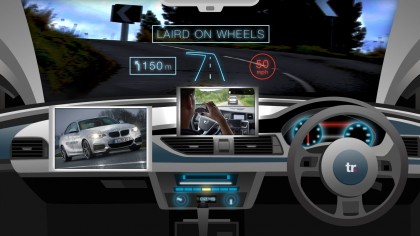
The end of car insurance?
As the future of driverless vehicles is in the latter stages of research and early stages of implementation, cyberethics is coming to the fore as a serious and relevant question – and one that driverless car developers will have to answer to governments and society as a whole.
And it's already being grappled with - according to reports, California lawmakers wrote into the statutes allowing driverless cars that any new application will have a 180-day inspection cooling-off period before governments will allow it to be sold to the public. California isn't alone - other US states including Florida and Nevada have also enacted legislation covering driverless vehicles.
Another by-product of the impending arrival of driverless vehicles is the impact it may have on the car insurance industry. The general thinking is that 90% of all motor accidents are the result of human error – taking out the 'human error' may see claims fall by a similar amount, with some are already predicting this could spell doom for insurance companies as a result of falling premiums.
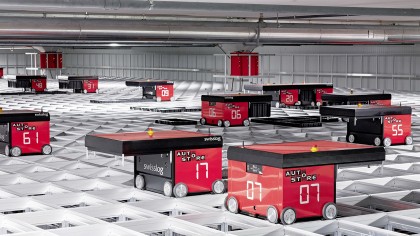
Jobs under threat
It's an example of where robotics is providing opportunities for some, but looks set to take them away from others. The Australian Financial Review (AFR) reported that new figures from the Australian Department of Industry show as many as 500,000 jobs are under threat of automation.
But the Australian Industry Report 2014 surprisingly suggests that 'being low-skilled does not necessarily mean that your job will be replaced by robotics'. Further, the report says 'robots are increasingly replicating the tasks of medium and high-skilled workers'.
However, department chief economist, Mark Cully, told the AFR fears of mass-unemployment and poverty amongst middle-class employees are 'overblown', with the report declaring automation will allow new technologies to deliver higher productivity and lower-cost products.
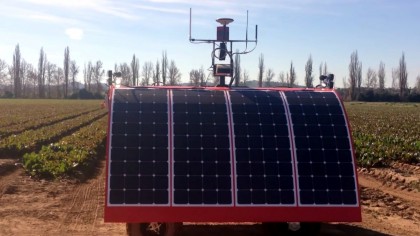
Industrial robotics
Part of that productivity increase is already coming from industrial robotics projects like Swisslog's AutoStore, which replaces human pickers and sorters with robotic ones on a major scale.
The system has already been installed by Australia's Catch Group to power the logistics of websites like 'Catch of the Day'. AutoStore isn't the only option in this area either – Amazon purchased Swisslog-competitor Kiva Systems in 2012.
If you think of the complexity of multiple bots running around picking items from thousands of bins, there's nothing easy about it. In fact, Amazon is organizing the first Amazon Picking Challenge at the 2015 International Conference on Robotics and Automation in Seattle this year to try and promote innovation in the area. It appears to be aiming as something of a 'DARPA Grand Challenge' for the automated picking robotics industry.
You'll also start seeing autonomous industrial robots turning up in the most unusual of places – including the vege garden! Sydney University's Ladybird was designed by its Australian Centre for Field Robotics (ACFR) to provide autonomous farm 'surveillance, mapping and classification for the vegetable industry' and has been successfully trialed in Cowra, NSW.
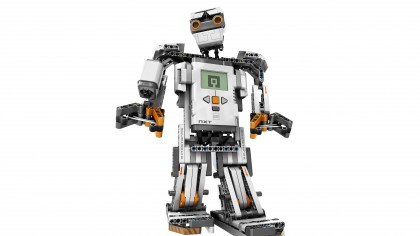
Building your own robotics
But if you're not quite ready to commit to a university degree, there are plenty of alternatives you can try out. Today, the proliferation of low-cost electronics and computer chips means building your own self-propelled, self-monitoring robotic machines is almost 'silly' affordable. Whether it rolls or walks, you can pretty much build it now.
LEGO's Mindstorms NXT and newer EV3 systems are popular entry points, particularly for lower/middle high-school students that can start them off but also grow into reasonably complex designs. If you're a school teacher, there are numerous education packs available from local LEGO distributors, although be warned – they can become quite expensive.
Beyond (and even an alternative to) Mindstorms, the next entry point is Arduino, the open-source microcontroller circuitboard system developed in Italy, but now manufactured and sold all around the world. Arduino predominantly uses low-cost 8-bit processors that you program with a simplified C++ language called Wiring.
Arduino is more 'real world' than NXT and sophisticated enough to handle everything from simple hobby robots to eight-legged octopeds and multi-prop unmanned aerial vehicles (or 'drones'). Arduino can mate with all manner of electronic and mechanical devices and is a great next-step platform – but you have to do all the design work yourself. If you have the necessary electronics and software coding skills, Arduino can be a cheaper, but also more complex alternative to LEGO's Mindstorms platform.
Beyond Arduino, you're getting into the rarified air of 32-bit CPUs of the same class used in current fitness bands and trackers. These ARM Cortex M-series chips provide a serious jump in performance and are used by industry in all manner of embedded applications – even to handle wireless broadband control in smartphones and tablets.

The future
Like most areas of science, society's engineering capabilities in robotics continue to stretch the current legal framework, particularly in motoring. From insurance and employment growth to ethical theory and the military, the future of robotics is causing much thought across all sectors as we figure out the ramifications of combining computer processing and all manner of motors into self-moving objects.
We've come a long way from the early days of Walt Disney cartoons, but you also get the sense that in the grand scheme of things and the potential the future has in store, we really haven't come that far at all.